Physical Description
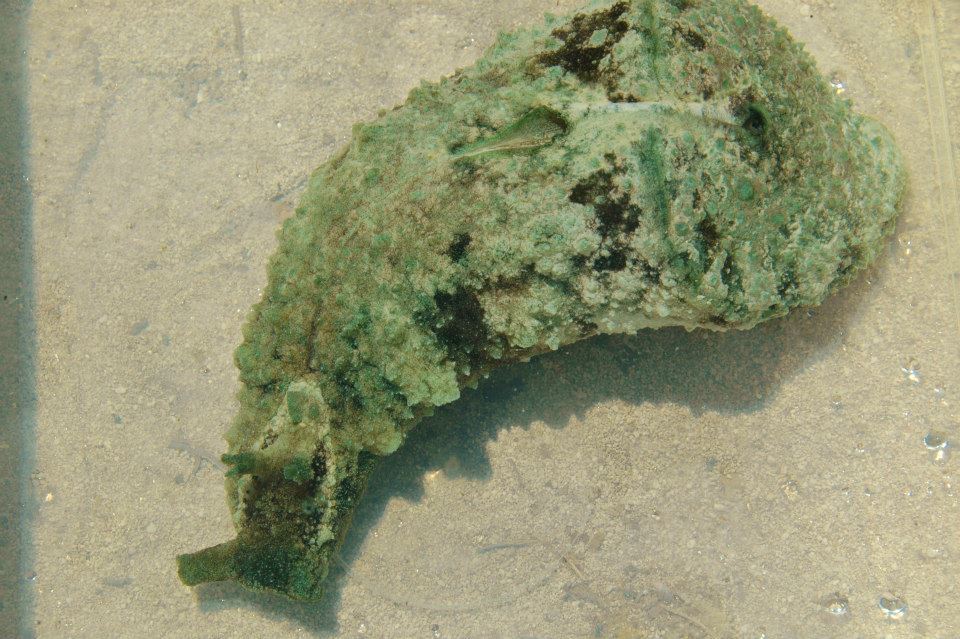
|
The wedge sea hare is one of the larger species of the sea hares. The sea hares are also the largest in size of the Opistobranchs, which include nudibranchs and other sea-slug like Gastropods. The specimens of wedge sea hares collected on Heron Island were between 140 – 170 mm long and 175 – 386 grams. In comparison, specimens from New Caledonia were 105 mm and 124 mm long, with 200mm reaching the upper size limit (Rudman 1999).
|
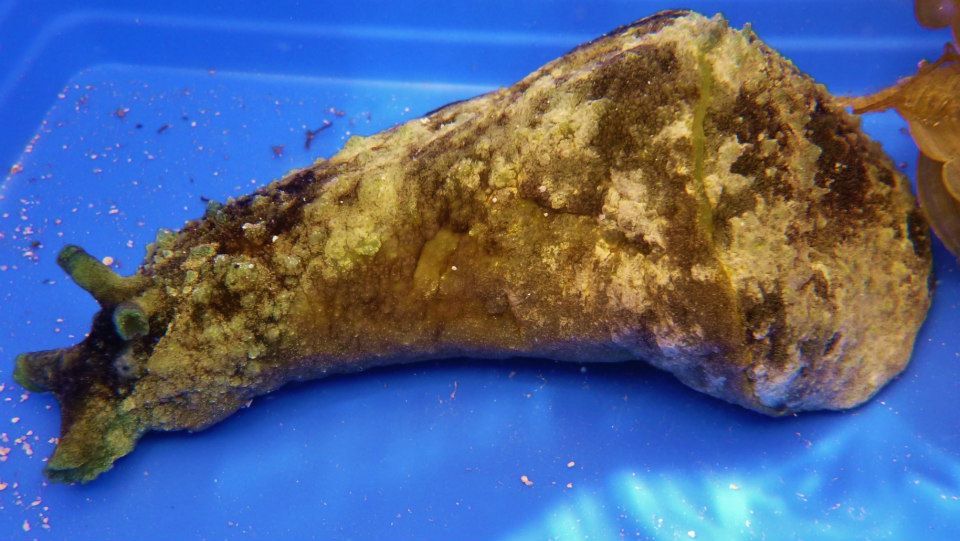 |
The body of a wedge sea hare is coloured a patchy green and brown. The colour can vary between individuals (see D. auricularia specimens from Heron Island, Australia 2012, left photos). This coloration pattern and warty skin texture allows them to be camouflaged among the algae that they eat (Ruppert et al. 2004). |
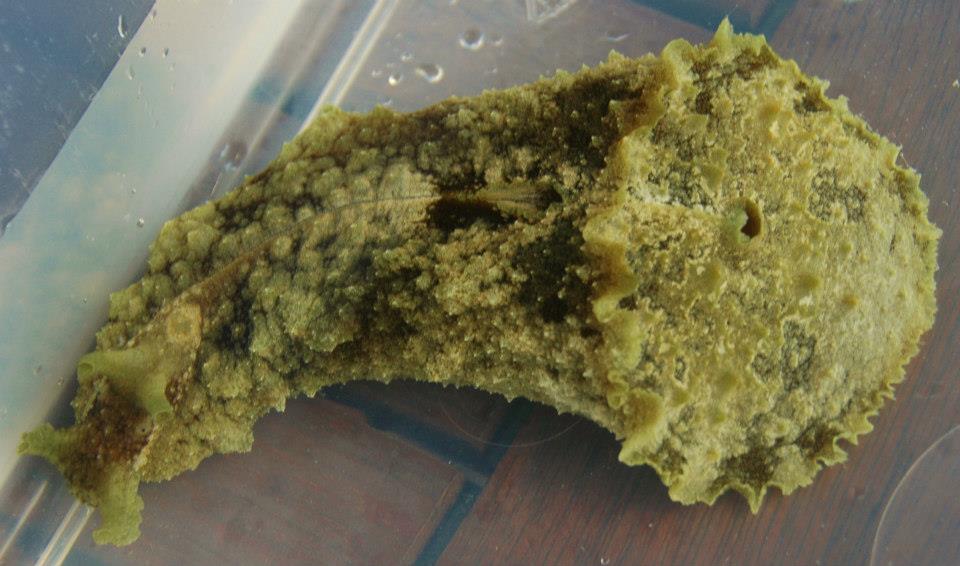
|
Wedge sea hares have a different body shape to the slug-like shape of the sea hares (e.g. Aplysia dactylomela, below right). The posterior (back) end of the body is a round, flat and sloping posterior shield (below left). The small head and wide bottom creates a triangular ‘wedged’ shaped body. In the field, the wedge sea hare can easily be mistaken for half a sea cucumber from a distance. |
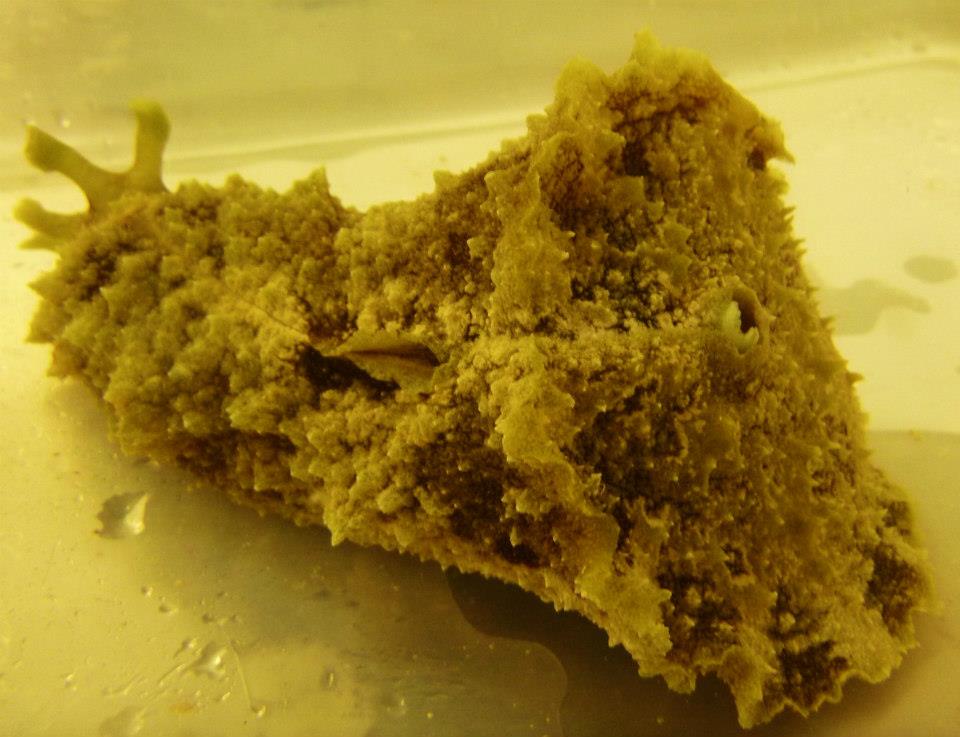 |
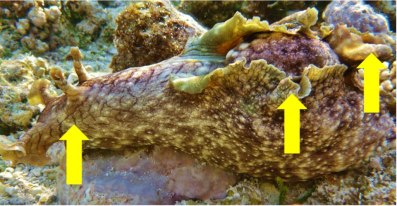 |
In general, sea hares can be differentiated from the other Gastropods by their slug-like body plan and the absence of an external shell (see above). Aside from the body shape, the wedge sea hare (above left) can be distinguished from another common sea hare on the Great Barrier Reef, the green-spotted sea hare (A. dactylomela, above right) by the absence of the black lines on the face and the mantle folds on the back (yellow arrows).
The incurrent siphon is on the dorsal (top) side of the body, the excurrent siphon protrudes from the centre of the posterior shield. The posterior shield is surrounded by frills. A seminal groove runs from the top of the body to one side of the head (Rudman 1999). The sea hares in general have secondarily derived bilateral symmetry from their non-bilateral Gastropod ancestors and relatives (Ruppert et al. 2004). A large muscular foot is located on the ventral (bottom) side of the body.
Wedge sea hares show cephalisation. Their mouth is on the ventral side of the body surrounded by oral lobes. The wedge sea hares have a pair of furled rhinopores on the top of the head and large, furled anterior tentacles which are used to detect chemicals and food from a distance (Kandel 1979). The sea hares are named so because the rhinopores on the top of the head look like rabbit ears. Between the rhinopores and the anterior tentacles there is pair of eyes.

|
![]() ![]() ![]() Glossary (Ruppert et al. 2004) Glossary (Ruppert et al. 2004)
Opistobranchs: The sub-class of Gastropoda which include the nudibranchs.
Gastropods: A class of the phylum Mollusca which include the land and sea snails and slugs.
Excurrent siphon: The organ which bring water into the body cavity where the gills are.
Bilateral symmetry: A descriptive term meaning the body has a line of symmetry down the middle, giving right and left sides.
Incurrent siphon: The organ which expels water from the internal body cavity, also where faeces are excreted.
Cephalisation: the distinction of a head region by the presence of sensory organs, e.g. eyes.
Oral: pertaining to the mouth.
Rhinopores: a second pair of sensory organs in Opistobranchs which is used to detect chemicals in the water (Croll 1983). |